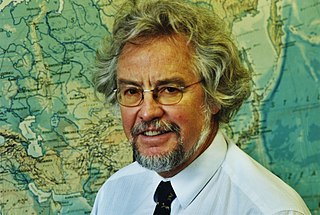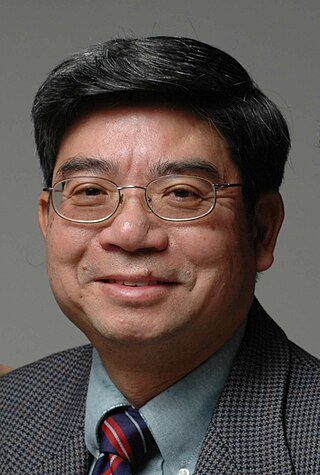Related Research Articles

Naval architecture, or naval engineering, is an engineering discipline incorporating elements of mechanical, electrical, electronic, software and safety engineering as applied to the engineering design process, shipbuilding, maintenance, and operation of marine vessels and structures. Naval architecture involves basic and applied research, design, development, design evaluation (classification) and calculations during all stages of the life of a marine vehicle. Preliminary design of the vessel, its detailed design, construction, trials, operation and maintenance, launching and dry-docking are the main activities involved. Ship design calculations are also required for ships being modified. Naval architecture also involves formulation of safety regulations and damage-control rules and the approval and certification of ship designs to meet statutory and non-statutory requirements.

Offshore construction is the installation of structures and facilities in a marine environment, usually for the production and transmission of electricity, oil, gas and other resources. It is also called maritime engineering.

An inlet is a indentation of a shoreline, such as a small arm, cove, bay, sound, fjord, lagoon or marsh, that leads to an enclosed larger body of water such as a lake, estuary, gulf or marginal sea.

Wave power is the capture of energy of wind waves to do useful work – for example, electricity generation, water desalination, or pumping water. A machine that exploits wave power is a wave energy converter (WEC).

Marine engineering is the engineering of boats, ships, submarines, and any other marine vessel. Here it is also taken to include the engineering of other ocean systems and structures – referred to in certain academic and professional circles as "ocean engineering".
Applied mechanics is the branch of science concerned with the motion of any substance that can be experienced or perceived by humans without the help of instruments. In short, when mechanics concepts surpass being theoretical and are applied and executed, general mechanics becomes applied mechanics. It is this stark difference that makes applied mechanics an essential understanding for practical everyday life. It has numerous applications in a wide variety of fields and disciplines, including but not limited to structural engineering, astronomy, oceanography, meteorology, hydraulics, mechanical engineering, aerospace engineering, nanotechnology, structural design, earthquake engineering, fluid dynamics, planetary sciences, and other life sciences. Connecting research between numerous disciplines, applied mechanics plays an important role in both science and engineering.
In fluid dynamics and elasticity, hydroelasticity or flexible fluid-structure interaction (FSI), is a branch of science which is concerned with the motion of deformable bodies through liquids. The theory of hydroelasticity has been adapted from aeroelasticity, to describe the effect of structural response of the body on the fluid around it.

Coastal engineering is a branch of civil engineering concerned with the specific demands posed by constructing at or near the coast, as well as the development of the coast itself.

In fluid dynamics, wave shoaling is the effect by which surface waves, entering shallower water, change in wave height. It is caused by the fact that the group velocity, which is also the wave-energy transport velocity, changes with water depth. Under stationary conditions, a decrease in transport speed must be compensated by an increase in energy density in order to maintain a constant energy flux. Shoaling waves will also exhibit a reduction in wavelength while the frequency remains constant.
John Nicholas "Nick" Newman is an American naval architect noted for his contributions to marine hydrodynamics. Together with David Evans, he initiated the International Workshop on Water Waves and Floating Bodies. He is also known for his contribution in the development of the wave–structure interaction code WAMIT. He is currently emeritus professor of Naval Architecture at Massachusetts Institute of Technology.

Howell Peregrine was a British applied mathematician noted for his contributions to fluid mechanics, especially of free surface flows such as water waves, and coastal engineering.

Hubert Chanson is a professional engineer and academic in hydraulic engineering and environmental fluid mechanics. Since 1990 he has worked at the University of Queensland.

Günther F. Clauss is a German professor for Naval Architecture and Ocean Engineering.
The moving particle semi-implicit (MPS) method is a computational method for the simulation of incompressible free surface flows. It is a macroscopic, deterministic particle method developed by Koshizuka and Oka (1996).

John Vrooman Wehausen was an American applied mathematician considered to be one of the world's leading researchers and pioneers in the field of marine hydrodynamics.

Ronald W. Yeung is a Distinguished Professor of Hydromechanics and Ocean Engineering at the University of California, Berkeley. He is one of the pioneers in the field of numerical ship hydrodynamics and marine renewable energy.
Harindra Joseph S. Fernando is the Wayne and Diana Murdy Family Endowed Professor of Engineering and Geosciences at University of Notre Dame. He holds joint appointments in the Departments of Civil and Environmental Engineering & Earth Sciences (primary) and Aerospace & Mechanical Engineering. He also holds a concurrent appointment with the Department of Applied and Computational Mathematics and Statistics.

B. Mutlu Sumer is a Turkish scientist and engineer known for his studies on seabed and structure interaction including scour and soil liquefaction, as well as turbulence in coastal and civil engineering. He was previously Professor at the Technical University of Denmark until he retired in 2015. He held a Professor-Emeritus position between June 2015 and June 2017 at the same university. He was Professor of Hydraulics at Istanbul Technical University before he moved to Denmark in 1984. B. Mutlu Sumer relocated to Turkey, his native country, in 2016 and, together with Professor Özgür Kirca, founded a consultancy and research company, BM SUMER Consultancy & Research, affiliated with Istanbul Technical University.

R. Cengiz Ertekin is a professor of Marine Hydrodynamics and Ocean Engineering. He currently holds a guest professor position at Harbin Engineering University of China. He is best known for his contributions to the development of nonlinear water wave theories, hydroelasticity of very large floating structures (VLFS), wave energy, and tsunami and storm impact on coastal bridges. He is also the co-developer, along with Professor H. Ronald Riggs of the University of Hawaiʻi, of the computer program HYDRAN for solving linear fluid-structure interaction problems of floating and fixed bodies.

Jørgen Fredsøe (1947) is a Danish hydraulic engineer who is recognized for his contributions within bed form dynamics in rivers and the marine environment and coastal morphology including bars and beach undulations. Together with professor B. Mutlu Sumer he initiated the research on scour (erosion) in the seabed around coastal structures applying detailed hydrodynamic interpretations. He was born in Randers, Denmark.
References
- ↑ "Awards and Honours", MIT News, November 15, 1995, retrieved January 15, 2011
- ↑ Plotnikov, Pavel; Korobkin, Alexander, eds. (2009), Proceedings of the 24th International Workshop on Water Waves and Floating Bodies (PDF), Zelenogorsk, archived from the original (PDF) on July 26, 2011
{{citation}}: CS1 maint: location missing publisher (link) - ↑ "C.C. Mei Symposium on Wave Mechanics and Hydrodynamics", OMAE 2009, ASME, archived from the original on February 18, 2011, retrieved January 15, 2011